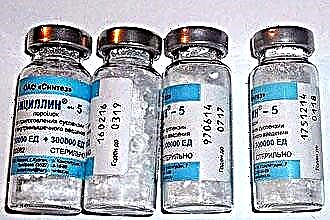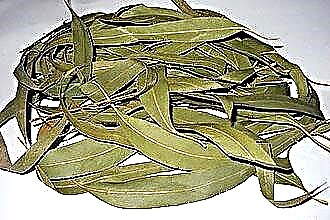Purulent sore throat is a common pathology, both among adults and among children. Its surge occurs in autumn and spring. Approximately 15 percent of the population is diagnosed with this annually. In acute tonsillitis, the palatine tonsils become inflamed. There are many types of sore throats. Some of them have a mild course, pass without fever and suppuration in the tonsils. Others are difficult, with a high risk of formidable complications. The disease has a high index of contagiousness, it can be easily infected from a sick person by airborne droplets, less often by contact, especially people with reduced immunity.
Classification and reasons
 Forms of purulent tonsillitis: lacunar, follicular, necrotic, phlegmonous. In part, the ulcerative-membranous tonsillitis (Simanovsky-Plaut-Vincent) belongs to the purulent forms, when a focus of suppuration is formed on the affected amygdala. This species differs from the others in a one-sided process and in the type of pathogen (symbiosis of a spirochete and a fusiform bacillus).
Forms of purulent tonsillitis: lacunar, follicular, necrotic, phlegmonous. In part, the ulcerative-membranous tonsillitis (Simanovsky-Plaut-Vincent) belongs to the purulent forms, when a focus of suppuration is formed on the affected amygdala. This species differs from the others in a one-sided process and in the type of pathogen (symbiosis of a spirochete and a fusiform bacillus).
To distinguish the forms of tonsillitis can only be an ENT doctor who will select an adequate therapy. Self-medication can lead to serious consequences.
Acute tonsillitis can be caused by viruses and bacteria. Depending on the pathogen, the clinical picture and treatment will be different. The causative agents of purulent sore throats are only pathogenic bacteria, most often streptococci, staphylococci, less often fungi, spirochete. In most cases (80%), the causative agent is group A B-hemolytic streptococcus. The first sore throat and malaise mean the activation of pathogenic bacteria. This is facilitated by such unfavorable factors:
- hypothermia, even enough to make your feet very cold or wet;
- weakened immunity may be due to vitamin deficiency, malnutrition and poor living conditions (dampness in the room, lack of light, poor ventilation);
- non-observance of personal hygiene, contact with contaminated objects;
- stress significantly reduces the body's defenses. Under the destructive influence of chronic stress, a person becomes vulnerable to infectious diseases;
- eating cold food, drinks, ice cream;
- prolonged bathing in cold water;
- long stay under the air conditioner.
Symptoms
Depending on the state of immunity, the symptoms of purulent tonsillitis can appear both a day after infection and a week later.
There are acute and chronic purulent tonsillitis. The acute form is characterized by a rapidly developing pronounced clinical picture and a severe course. The chronic form is characterized by relapses in the autumn-winter period. The only way to get rid of constant relapses is to surgically remove the tonsils.
The chronic form is no less dangerous than the acute one, since there is a constant source of infection in the body.
 Through the blood, pathogenic bacteria can enter any organ, causing inflammation. The penetration of microbes into the brain is especially dangerous. That is why it is so important to start the right treatment on time.
Through the blood, pathogenic bacteria can enter any organ, causing inflammation. The penetration of microbes into the brain is especially dangerous. That is why it is so important to start the right treatment on time.
- Purulent tonsillitis begins with general malaise, the symptoms develop rapidly. In just a few hours, a person's condition deteriorates sharply. Already on the first day of illness, pronounced signs of intoxication appear: severe aches in muscles and joints, headache, dizziness, nausea, and vomiting occurs. The patient is weakened, it is difficult for him to stay on his feet.
- The temperature rises sharply to 38.5 degrees, maybe higher, it is very difficult to knock it down. The patient does not sleep well, refuses to eat, he is shivering. Such a pronounced intoxication is explained by the violent activity of streptococcus and the release of its waste products (toxins) into the bloodstream.
Purulent tonsillitis cannot flow without temperature! Moreover, the numbers on the thermometer are always very high. Because of this, the patient may experience confusion.
- There is a sore throat of such intensity that the patient cannot swallow. The tonsils are covered with purulent foci of white-yellow color, a putrid odor comes from the mouth.
If adequate treatment is not started on time, the tonsils can increase in size so that they block the entrance to the pharynx. In this case, the person without medical assistance may suffocate.
- Almost all groups of lymph nodes in the head region are inflamed: submandibular, occipital, cervical, parotid. Sometimes the neck is very swollen.
- There may be abdominal pain, skin rash, runny nose, cough. But not everyone who is infected has these symptoms.
Diagnostics and treatment
An otolaryngologist is involved in the treatment of tonsillitis. He examines the throat with a special mirror (pharyngoscopy), a bacterial culture is taken from the tonsils to determine the pathogen. This is very important, the type of pathogen will depend on the treatment! To differentiate the diagnosis, additional diagnostics can be assigned: specific tests, blood tests, magnetic resonance imaging. The main diseases with which purulent sore throat must be differentiated are diphtheria and scarlet fever.
Medicines for the treatment of tonsillitis are selected strictly individually, but there is a general treatment regimen for this disease:
- the basis of treatment is antibacterial drugs of a wide spectrum of action. Antibiotics are used in injections, tablets, for topical use;
- antihistamines are necessarily prescribed, which reduce swelling in the throat;
 anti-inflammatory lozenges to relieve sore throat;
anti-inflammatory lozenges to relieve sore throat;- with severe intoxication and a high risk of complications, hospitalization will be required, where, in a hospital, the patient is given infusion and hormonal therapy to remove toxins from the body;
- after the acute process subsides, Bicillin-5 is prescribed to prevent relapse. The drug is administered once a month for six months;
- gargling is the basis of local treatment. Both traditional remedies and traditional medicine are effective here. The throat is caressed with salt water of 9% concentration (2-3 grams of table salt per glass of warm water), a solution of sea salt, furacilin, chlorophyllipt. Infusion of anti-inflammatory herbs, beet juice, lemon water, weak manganese solution;
- a dressing with a hypertonic solution (3 tablespoons of salt per liter of warm distilled water) helps from sore throat and lymph nodes. The bandage should be secured with a bandage or gauze, but not with a film. The solution not only relieves pain in the throat and neck, but also effectively removes toxins directly from the area to which the bandage with the solution is applied;
- symptomatically prescribed antipyretic drugs, vasoconstrictor nasal sprays and drops, anti-inflammatory sprays to irrigate the throat. Lubrication of the tonsils with Lugol's solution reduces dryness of the mucous membrane and sore throat, gives an anti-inflammatory effect.
Bed rest and drinking plenty of fluids will help the body fight infection faster and reduce the risk of complications.
Complications and prevention
In case of untimely treatment of acute tonsillitis, there may be the following consequences:
- paratonsillar abscess (phlegmonous tonsillitis) - inflammation of the tissues around the tonsils on one or both sides. A very serious condition that requires opening the abscess in a hospital setting;
- mediastinitis is a life-threatening condition that requires urgent surgical intervention;
- acute otitis media can develop not only from lack of treatment, but also from improper therapy;
- bacteria can enter the joints, which leads to the development of a serious disease - septic arthritis;
- rare, but extremely serious complications that lead to permanent disability: glomerulonephritis, polyarthritis, rheumatism.

Prophylaxis
To reduce the risk of contracting purulent tonsillitis to a minimum, you need to have strong immunity and not contact infected people. Immunity is strengthened by rational nutrition, hardening of the body, the absence of bad habits, the ability to withstand stress and the ability to deal with the consequences of stress.
You need to try to prevent hypothermia, not to eat too cold food, drink at least two liters of water a day, often ventilate the room, do wet cleaning, and prevent the air in the room from being hot and dry. It is necessary to adhere to the rules of personal hygiene, do not be under the included air conditioner, avoid public places during an outbreak of infectious diseases.

 anti-inflammatory lozenges to relieve sore throat;
anti-inflammatory lozenges to relieve sore throat;


